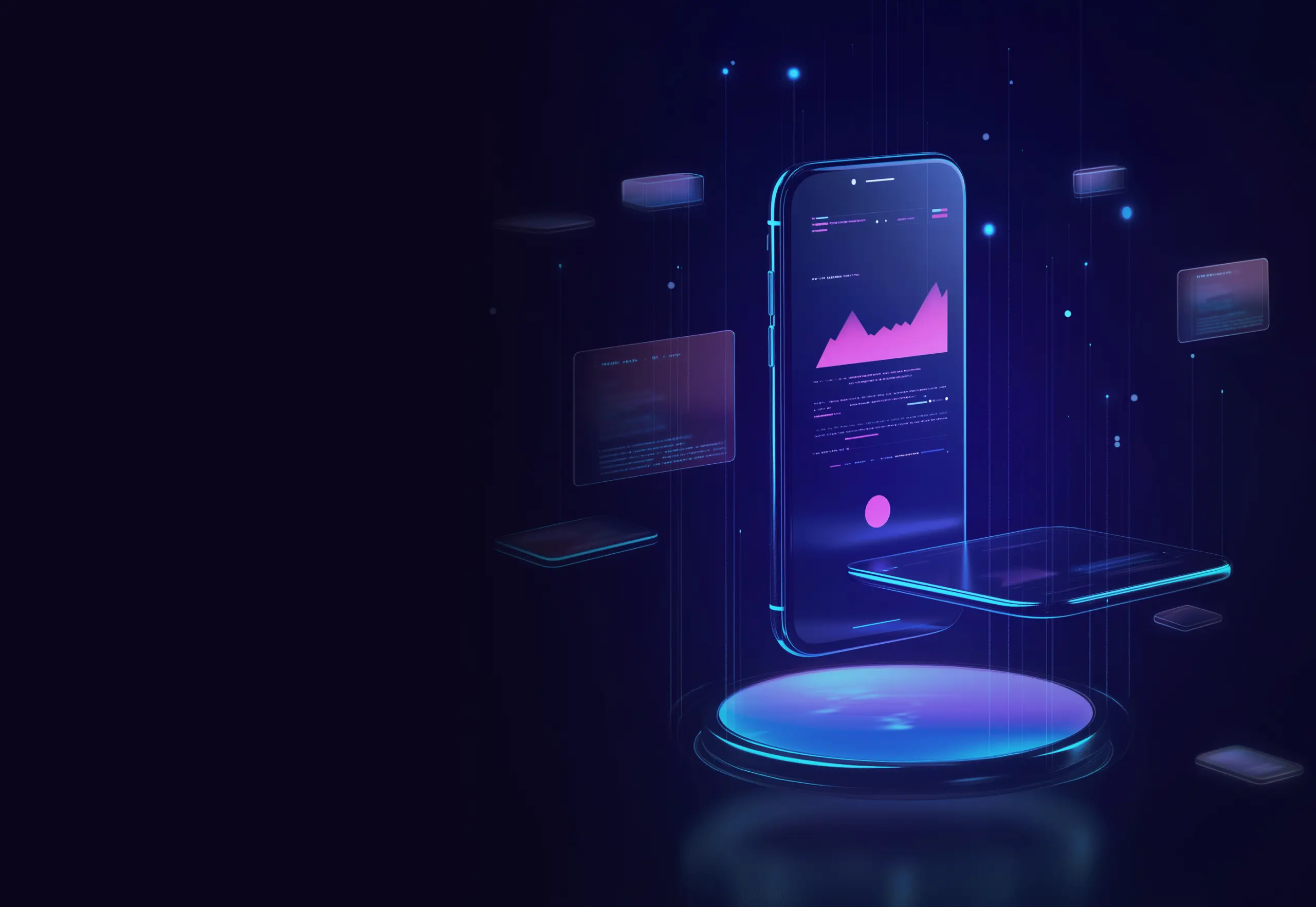Dramatically Increase Funds for Your Business, Pt. 1 - Research with the Client
16.12.2022 | 8 min read
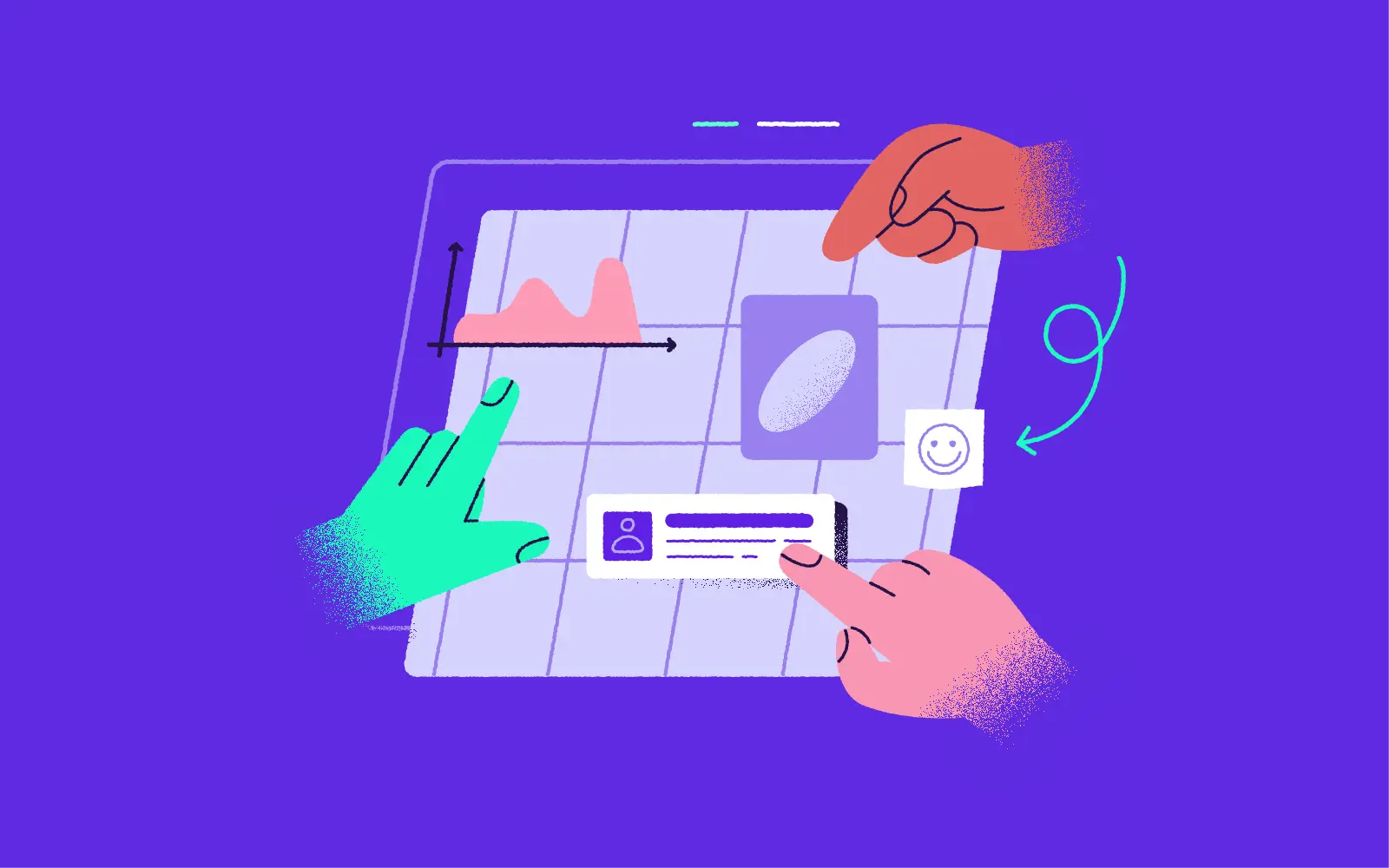
These are tough times for fundraisers. Although investor money is abundant, with the so-called dry powder amounting to record $290 billion stored in the VCs alone, neither startups, nor scale-ups can count on easy money. Market uncertainty is the obvious culprit. Yet no matter what stage your business is in, there are still ways to get noticed and have your company injected with capital in this age of no. But to get your business funded, you might need to take some extra steps.
Enjoy our 3-part series of articles aimed at showing you just that: how to increase chance for money in a time of crisis.
Let’s be dramatic about fundraising
When was the last time you saw a trick book on money-making? That “everything is possible with the right attitude”-type one? Since you are here, you probably never did. At 10Clouds it has never been our way to take business things this lightly. But we could kinda relate to that phrase, if only that oh-so-elevated “right attitude” was followed by the right approach. Agile approach, to be specific.
It’s obviously easier said than done. Still, digital product development might have a few trump cards up its sleeve: good management in a time of crisis and one especially pleasurable, which is the client-assisted research. So if you really want to maximize your chances for a startup business loan, make some noise in scaleup financing, or have a strategic investor wanting you to “shut up and take their money”, this is one method definitely worth trying.
Discovery process with clients - grasp the business potential
If you follow our blog, you might have noticed the importance of grassrooting in the DeFi sphere being on everyone’s lips lately. As the market has now been down for almost a year, what matters is less the hype, and more the strong foundations. This brings us straight to the point: the discovery process for any IT product will create the most solid basis for your business that you can dream of. One which answers the questions why, how and what, while ascertaining business value from the onset and bringing first validation by the real user.
Isn’t it great foundations and well-measured market demand what investors crave in these uncertain times, after all? Add to it short iteration periods which can test the resulting MVPs already in the market and you have written yourself a golden recipe for a minimum-risk, user-tested solution that only waits to get funding (did I mention you can involve the investors themselves in the discovery process, too?).
As our Senior Account Manager at 10Clouds Anton Halkouski put it:
In the software development world, many factors affect the success of both implementation and success of a product: market fit, timely launch, adoption tactics, and usability. By combining product focus with fine-tuned agile practices, 10C agile methodology helps minimize the impact of what's not in control and allows one to avoid costly mistakes early on. Equipped with this methodology, our teams enable customers to navigate with more ease on their path to customer-centric development.
Spot on.
What exactly is the client-centered discovery process?
It is something you don’t want to miss out on. Consider this:
IT organizations waste an average of $101 million for every $1 billion spent on projects and programs due to poor project performance, compared to the global average of $114 million for every $1 billion spent.
If that alone is not enough, look at this data:
35% of the startups/scaleups fail because they are tackling problems that are interesting to solve rather than those that serve a market need.
You see, market mismatch is arguably the saddest scenario for your project. Starting or scaling up - it doesn’t matter. You put your hard work and money into something that was doomed to failure from day one.
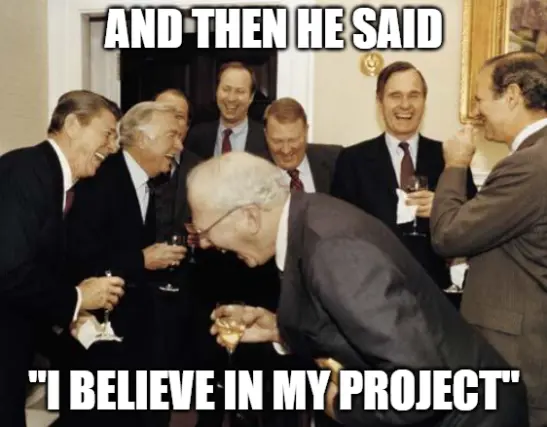
Luckily, there is a lifehack for this one.
The product discovery phase can help you assess your idea by testing it against the expectations of users. Your clients will be put at the center of this process to bring the answer to the crown question: is there even a market for my product?
How to get money to fund your business? Understand the investor!
Now put yourself in your future investor’s shoes. It would be nice to receive a pitch for this next big thing in need of money with plain market research data in it, right?
There are numerous needs investors have, and your discovery process should bring investors as close to fulfilling them as possible - being realistic is one of the most important traits.
Typically, what investors find the most valuable while considering entering with capital, is:
- Faith in the leadership team
- A business concept that has a broad customer base and a unique edge over rivals
- An organization with a growing presence or success rate
- A plan that will produce income
Only after gathering the substantial insights on the end clients’ needs will a good agile team develop an action plan for the product and determine the necessary resources and timelines - with full focus on the most crucial functionalities to meet your business goals and address real needs of your users.

So if you are looking to get funded, you’ve come to the right place. You can make sure you have well-researched market demand with 10Clouds! Our cycle of articles on fund-hacking is based on our newly created 10C Agile Playbook, a must-read for CEOs, CFOs and product owners. This is what Wiosna Wiłkomirska, our Senior Agile Coach, has to say about the publication:
10C product delivery approach described in the playbook addresses a big gap left in the leading Agile methodologies: managing the product throughout its lifecycle to increase its chances for market success. The product and collaboration practices we're including in our approach work well together with frameworks like Scrum or Kanban, so we're able to offer our clients holistic support for their business: from discovering and defining the product, through efficiently delivering its MVP or MMP versions, to scaling it later on.
From market research to launch, and throughout the entire product lifecycle, we’ve got you covered.
How can the discovery process answer the investor’s needs?
Now, let’s get into some details. There are two key phases at the beginning of product delivery - the Insight phase and the said Discovery phase. Their completion is absolutely critical before we can further go to the MVP development (Minimum Viable Product). Both allow us to pinpoint the market potential of our product without investing much time and money. They will show the real market fit and bring commitment of first potential customers.
At 10Clouds, the delivery process covers both the Insight and Discovery phases of the product lifecycle, which covers 5 phases in total:
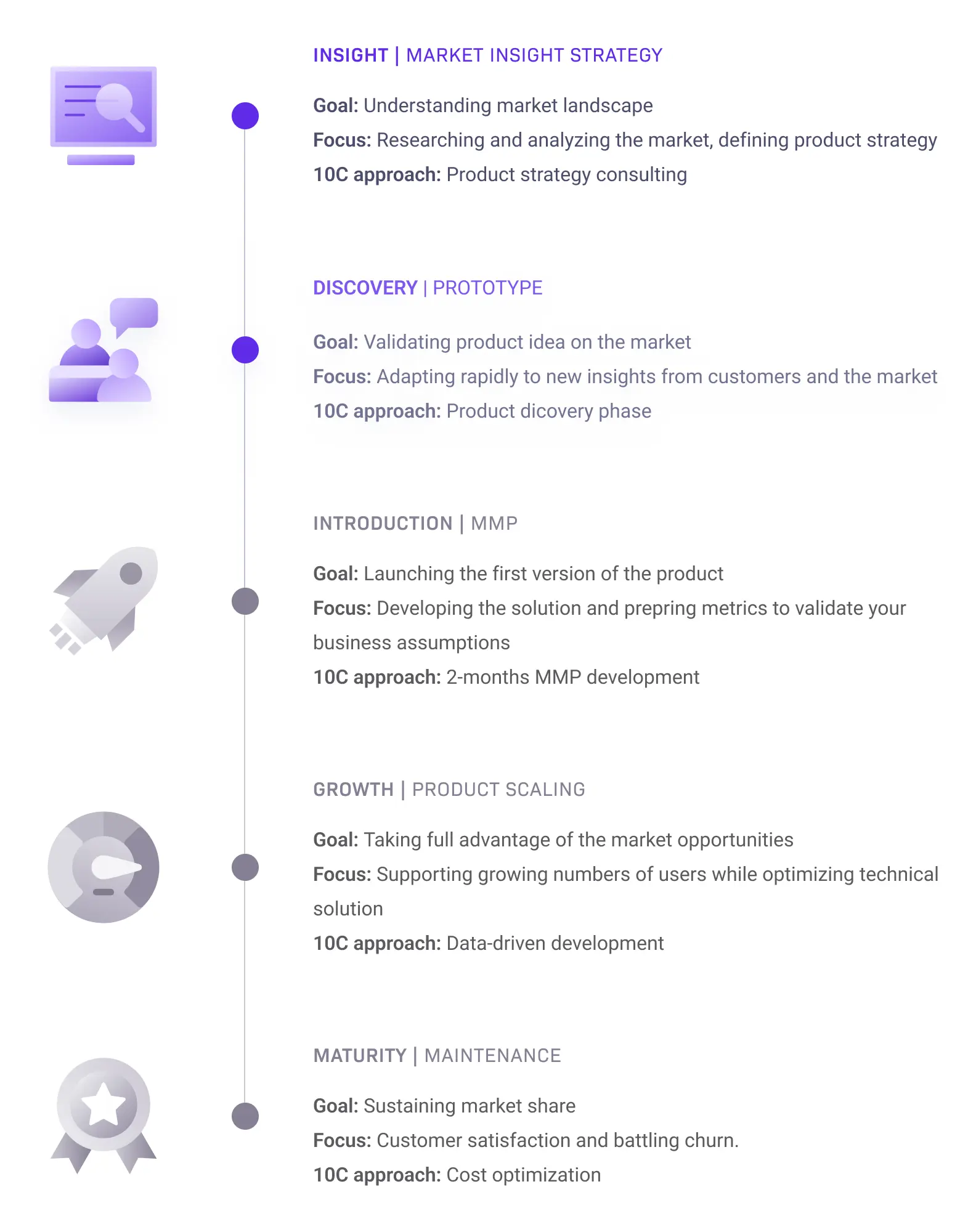
Take a look at the first two and see what benefits they bring.
Insight phase
This is the beginning of the journey for customers who have a basic concept for a product. In this stage, the focus is on confirming whether the issue that needs to be addressed is worth the effort - and someone’s money.
At this point, we are striving to comprehend the marketplace and develop a product strategy based on the market study. The objective is to craft a product strategy that will make any future work on the product successful and focused on value generation, taking into account the market and potential customers.
What outcomes are achieved:
- Problem-solution fit - confirmed and evaluated with the market (users, clients)
- Market insight strategy
- Competitive analysis
- Initial confirmation that the product will bring value to users if it solves this problem
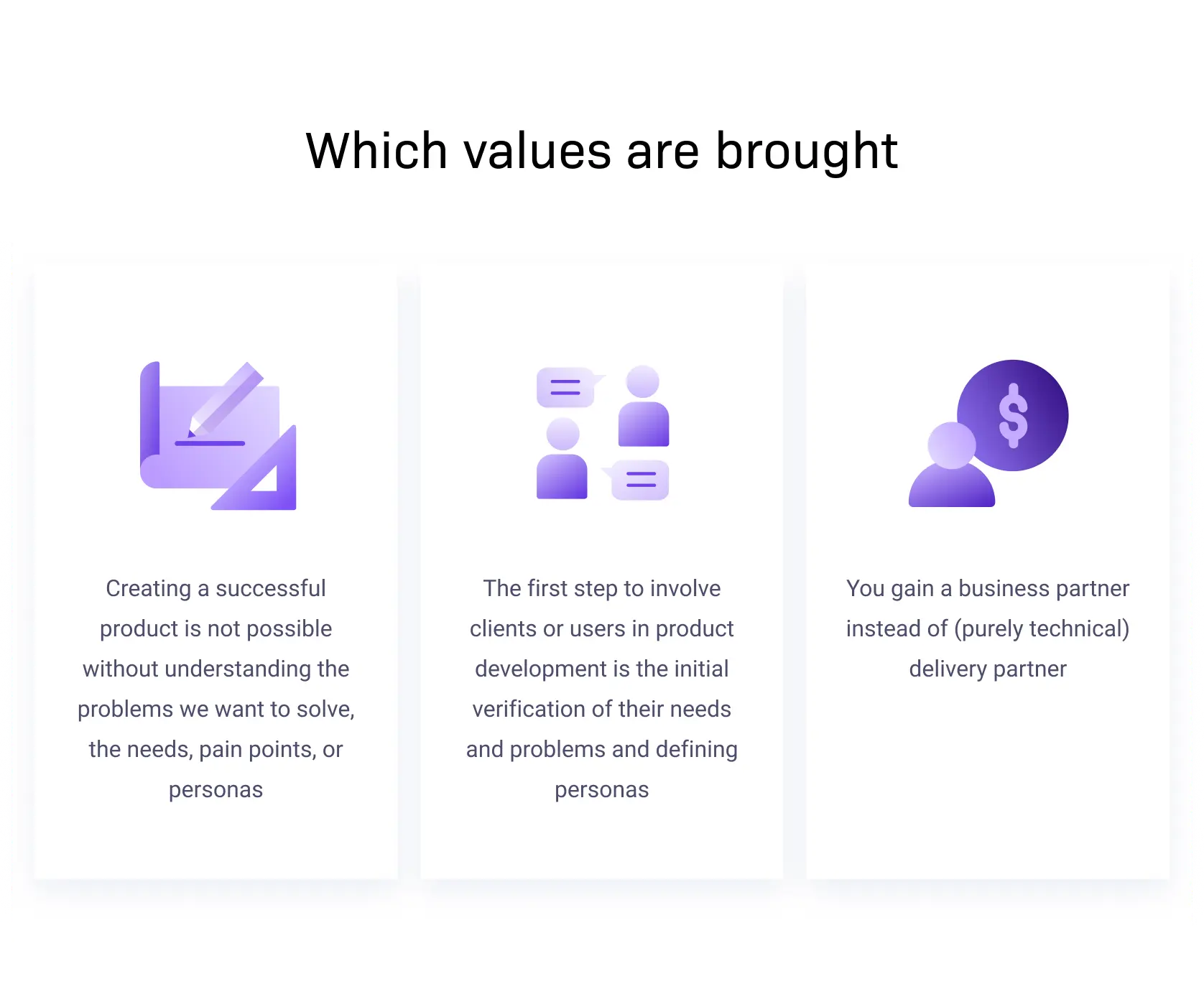
How we get it done at 10Clouds:
Seated at their desks and during numerous meetings, the Insight Phase is conducted by product managers, UX researchers, product designers, and technical experts drawing from Design Thinking and Lean Startup approaches.
It is important that you as a client bring representation from people with knowledge about the market, product vision, target customer groups, and end users. This phase is to determine what is already known and where more research is required, particularly concerning end users.
It usually lasts 3-6 weeks, however, its length can vary depending on the complexity of the product and the amount of research that needs to be done.

Discovery phase
In a brightly-lit conference room the client and the developer’s team aim to test the initial product strategy in the market by asking potential customers if the proposed solution is viable (this can be also done online, of course).
Investors don’t like to waste time. This evaluation should be fast, low-cost and be able to be adjusted after each iteration. The team will experiment in order to identify the product/market fit and measure it, to see if it adequately addresses user problems and provides desired features.
What outcomes are achieved:
- Initial product-market fit
- PoC
- Having good understanding of value provided by the solution or feature(s)
- Lower risk of product failure due to not delivering enough value to users
- Having verified features which can be added to Product Backlog with higher certainty level
- Possible removal of Product Backlog Items which are not delivering enough value (resources saving)
- Possible pivot of whole solution or just a part of it
- Initial user base
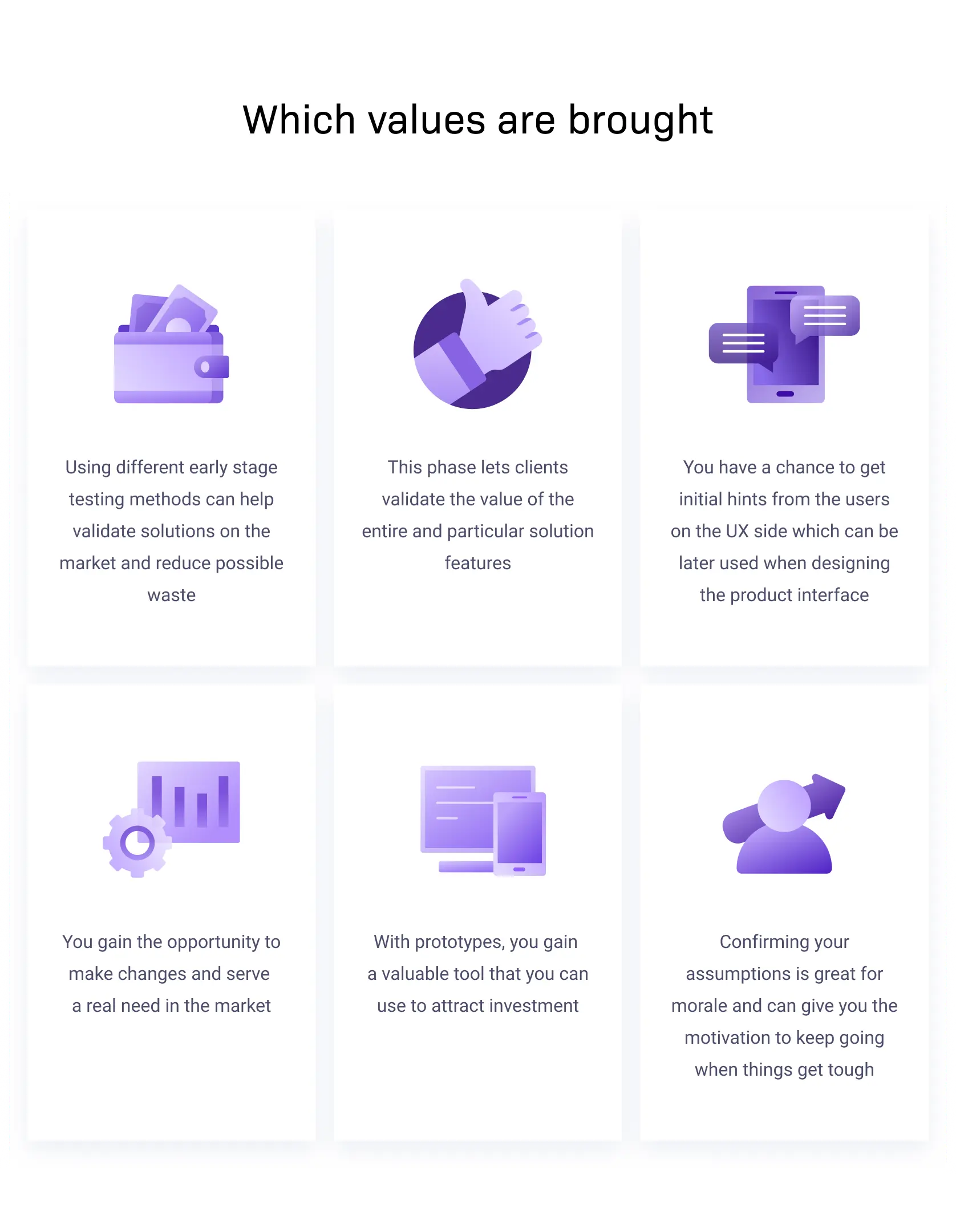
How we get it done at 10Clouds:
Look at this Behance beauty - it’s showing the results of our workshops with Pexip, Mastercard and other financial clients (and their clients, too). Virtual Branch was built from the ground up using strong market research. It really paid off and we are extremely proud of our work.
So how does it usually go? In this stage, workshops, investigations, and design/development are conducted to form prototypes to be tested. The Design Sprint framework is usually employed during this step and UX researchers, product designers, developers, and Product Delivery Managers are included.
The same people that participated in the Insight Stage should be involved but the emphasis is on managing the interactions with end users; sometimes it may be necessary to organize and execute campaigns on social media for prototype testing.
The length of the Insight Phase varies based on the product complexity, research needed and number of end users, and it usually lasts for 3-6 weeks.
It’s still the beginning, but you can already generate profit - investors will like that!
The first two stages of the discovery phase bring us straight to the product delivery phase, market introduction and growth stages (congratulations, you’ve just become successful!).
At 10Clouds, we strongly encourage our clients to break down their product delivery into separate releases, with the goal of getting a Minimum Marketable Product (MMP) out to the public as soon as possible. The MMP should have enough features to be useful to customers, but not every feature that the product will eventually have. This way, we can start building up the user base, generate revenue, and test the product to get feedback that can help ensure its success in the future.
As you can see, the discovery process can increase the chance of getting funds for a business by creating a positive impression and demonstrating the real potential of the business. Holding workshops that are focused on the business’s goals, objectives, and strategies can help potential investors get a better understanding of the business and its potential for success. And online workshops with your customers can bring you closer to the goal, too. By discussing the plans for the business, showing the feasibility of the ideas, and demonstrating the commitment of the team, the discovery process can create a strong impression that can lead to increased interest and more eager business loaning.
Additionally, the discovery process can help to identify potential funding sources, create relationships with investors, and answer any questions that potential investors may have.
It’s a full house. And the best thing is they are grounded in the market as strong as it can get.

